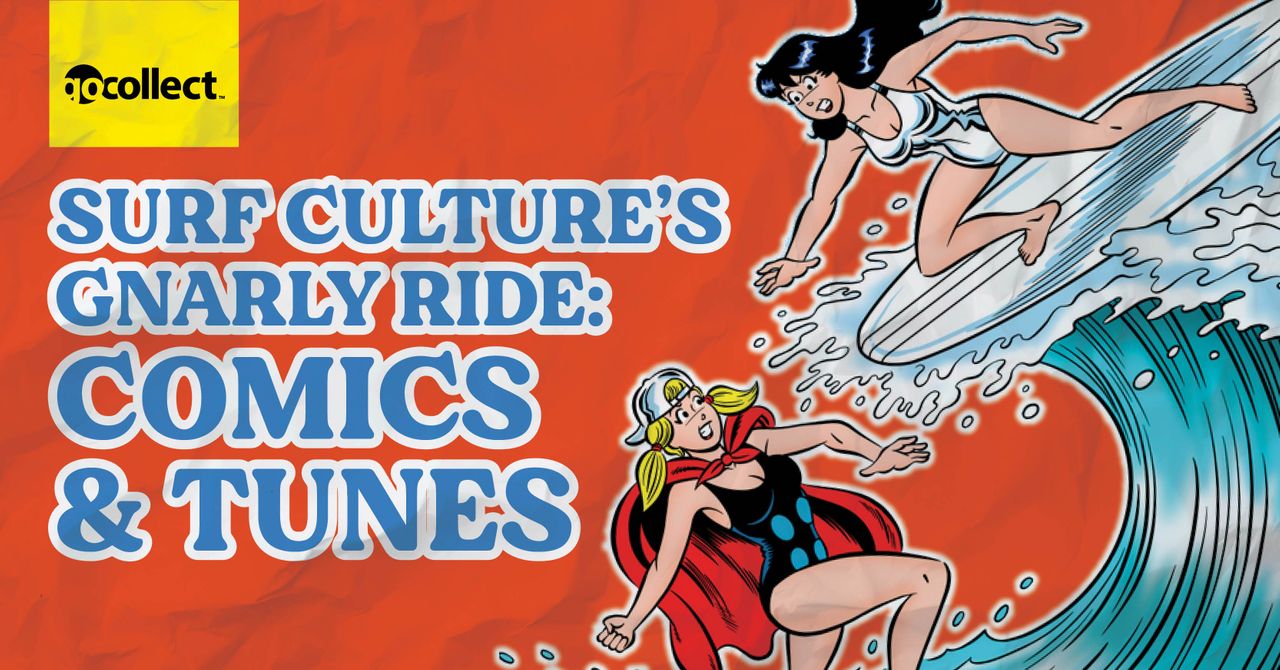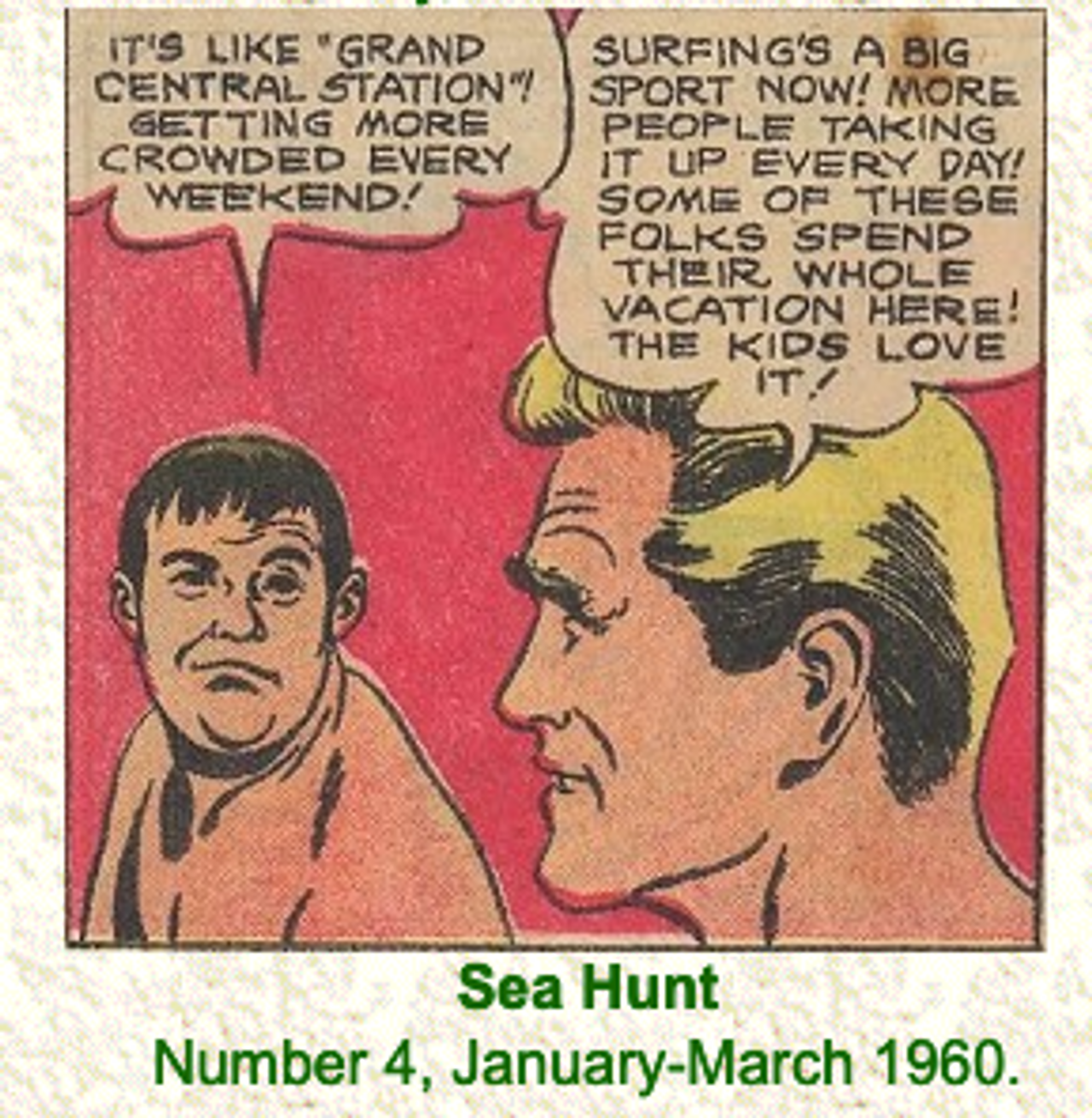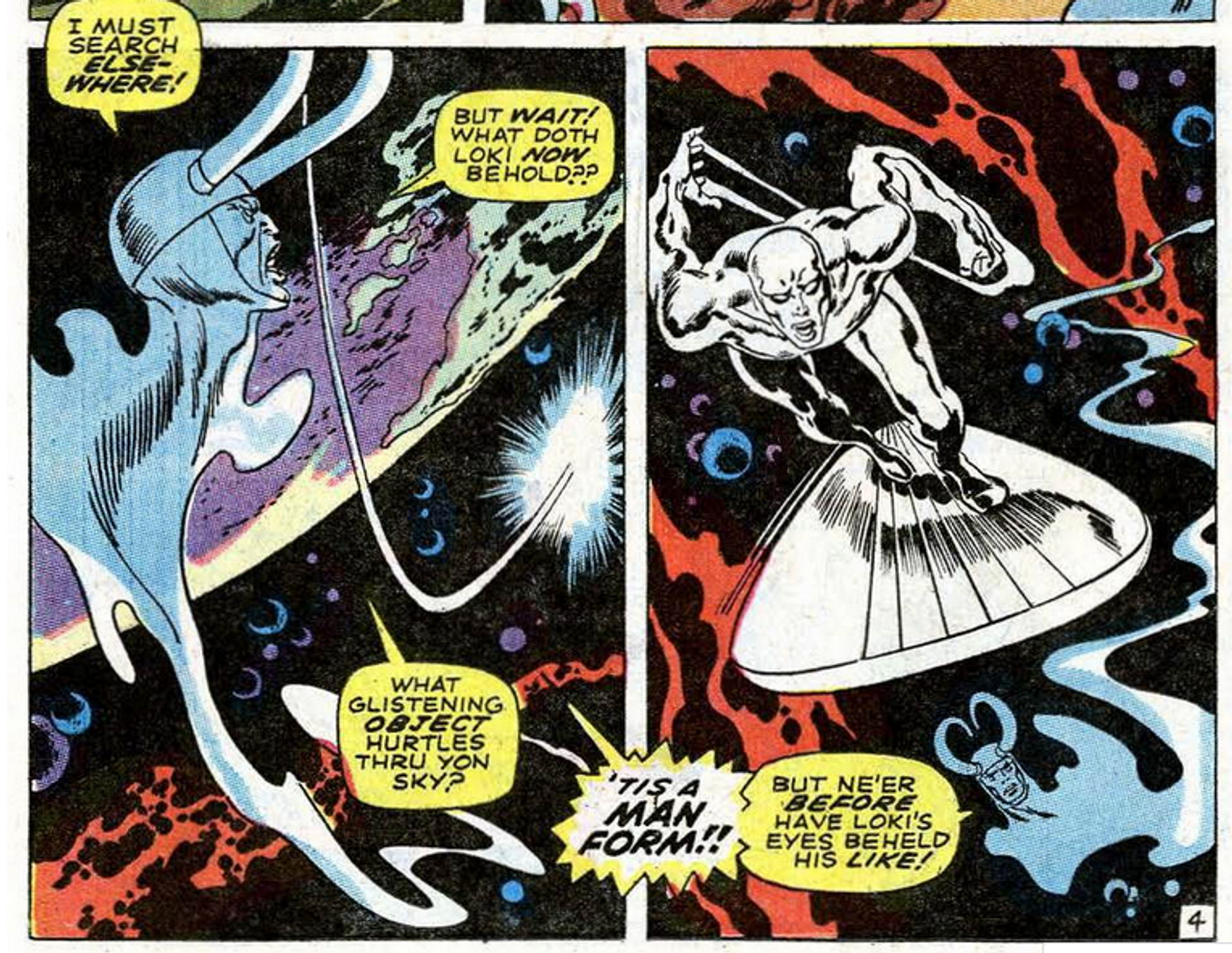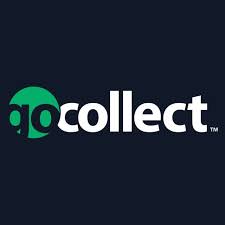Here we are in the middle of another summer. Collectible markets are sporadic, temperatures are soaring, and my itch to make the most of this mood has me laying out my surf gear and waxing up a long board.
As I prepare to paddle out past the breaking waves, I'm reminded of surfing’s profound connection to American pop culture. From it's early days, the sport’s ascent into the American consciousness was significantly influenced by a rich tapestry of media, particularly comic books and music. I was introduced to this zeitgeist years before I would ever try surfing. Thanks in part to these powerful influences, surf culture was catapulted into the mainstream way before it was actually cool.
Heading out for a surf instantly takes me to a place of ethos. It can be said that if you surf on the right day at the right beach with the right crew, there’s really not much happening in front of you that is dissimilar to what you’d see on the cover of a 1960's Archie comic.
While the origins of surfing are deeply rooted in Polynesian tradition, it was American surfers who transformed it into a symbol of freedom and rebellion in the mid-20th century. And before surfing reached its zenith, the Beach Boys and Archie Comics were pivotal in amplifying surf culture.
Inventing U.S.A.
In the 1960s, the Beach Boys were more than just a band—they were the soundtrack of surf culture. Their albums, such as “Surfin’ Safari” and “Beach Boys’ Party!” weren’t just musical projects—they were cultural phenomena that immortalized the carefree spirit of the surf lifestyle. Their upbeat tunes and vibrant lyrics painted a picture of sun-soaked beaches and endless fun, making surfing not just a sport but a lifestyle that resonated with a broader audience. Their influence extended beyond just music, influencing fashion, film, and the overall perception of beach life.
The Beach Boys remain a cultural touchstone, their music still evoking a nostalgic escape to an idyllic, carefree California. An increase in popularity of collecting that shared nostalgia has breathed consistent life on this somewhat 'niche' market of surf and beach depictions in collectibles.
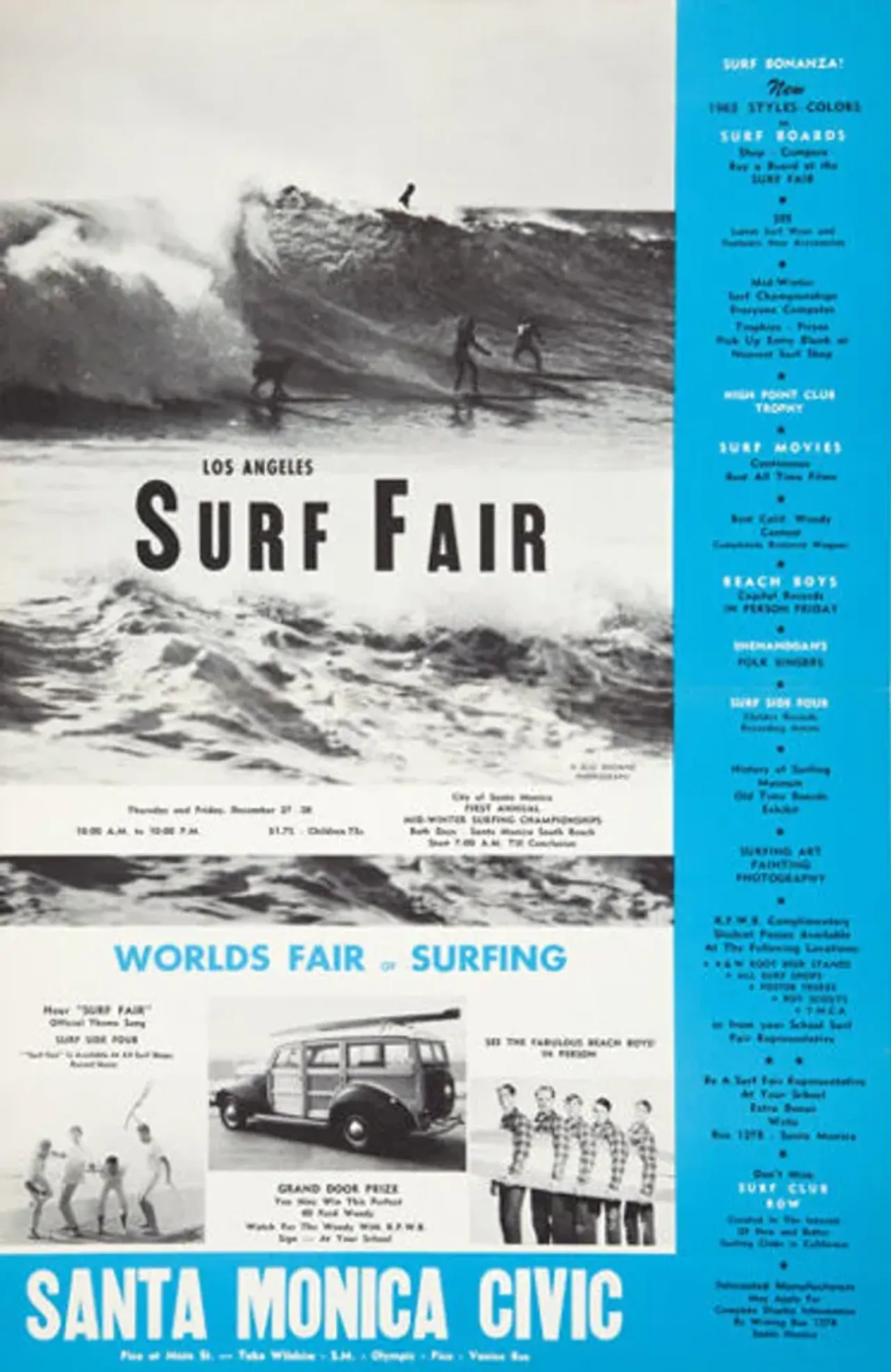 Beach Boys Santa Monica Civic 1962
Beach Boys Santa Monica Civic 1962
The last unrestored sale of this very early Beach Boys appearance sold for $1,688.00 at Heritage in 2022. Since then there have been 2 restored copies offered at the same venue that went for $969.00 and $209.00 respectively during 2024.
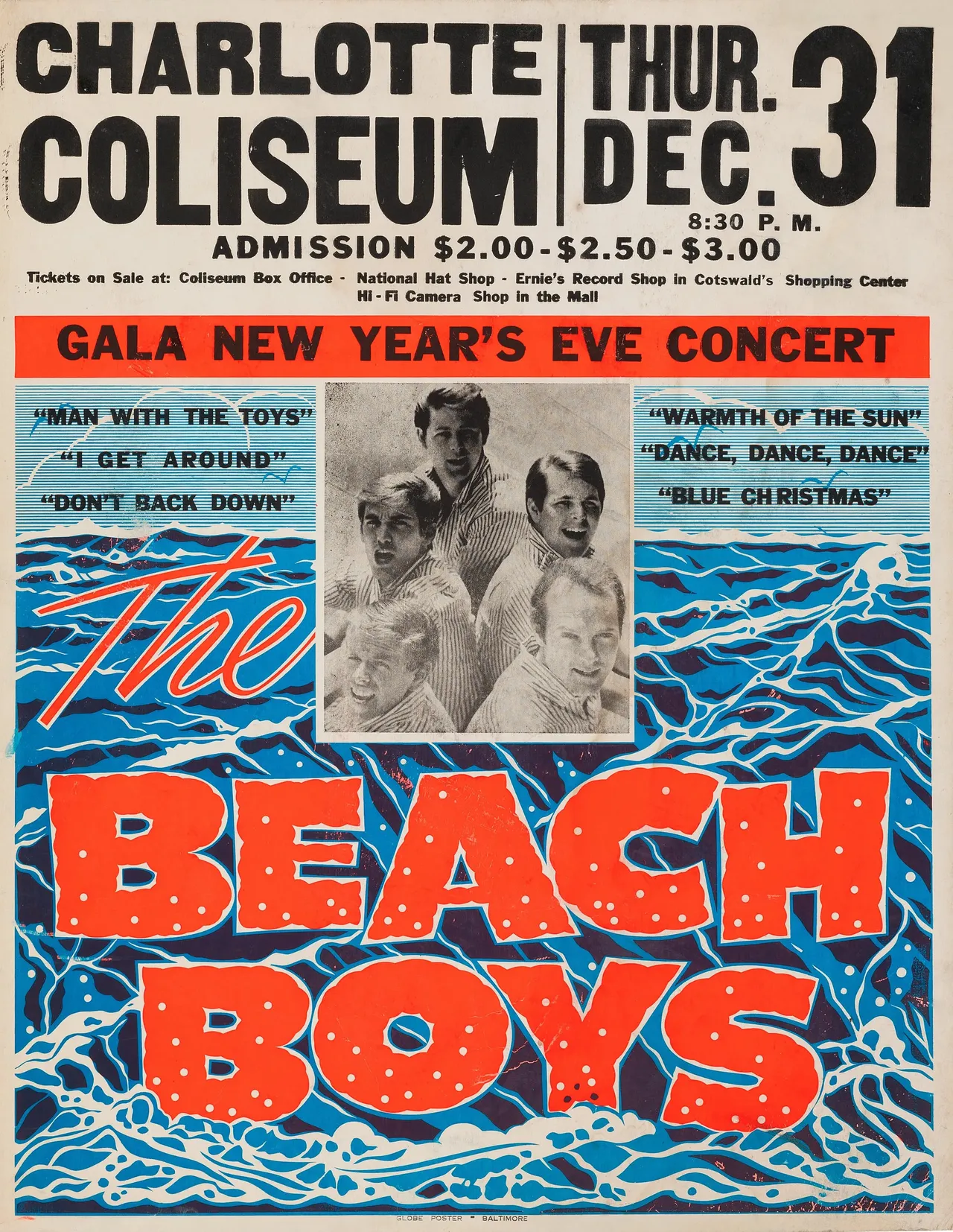 The Beach Boys Charlotte Coliseum 1964
The Beach Boys Charlotte Coliseum 1964
There is only one recorded sale of this New Year's Eve Gala poster, but it commands the value you'd expect from the Beach Boys at their best. An uncertified, unresotred copy sold at Heritage for $2,250.00 in late 2022.
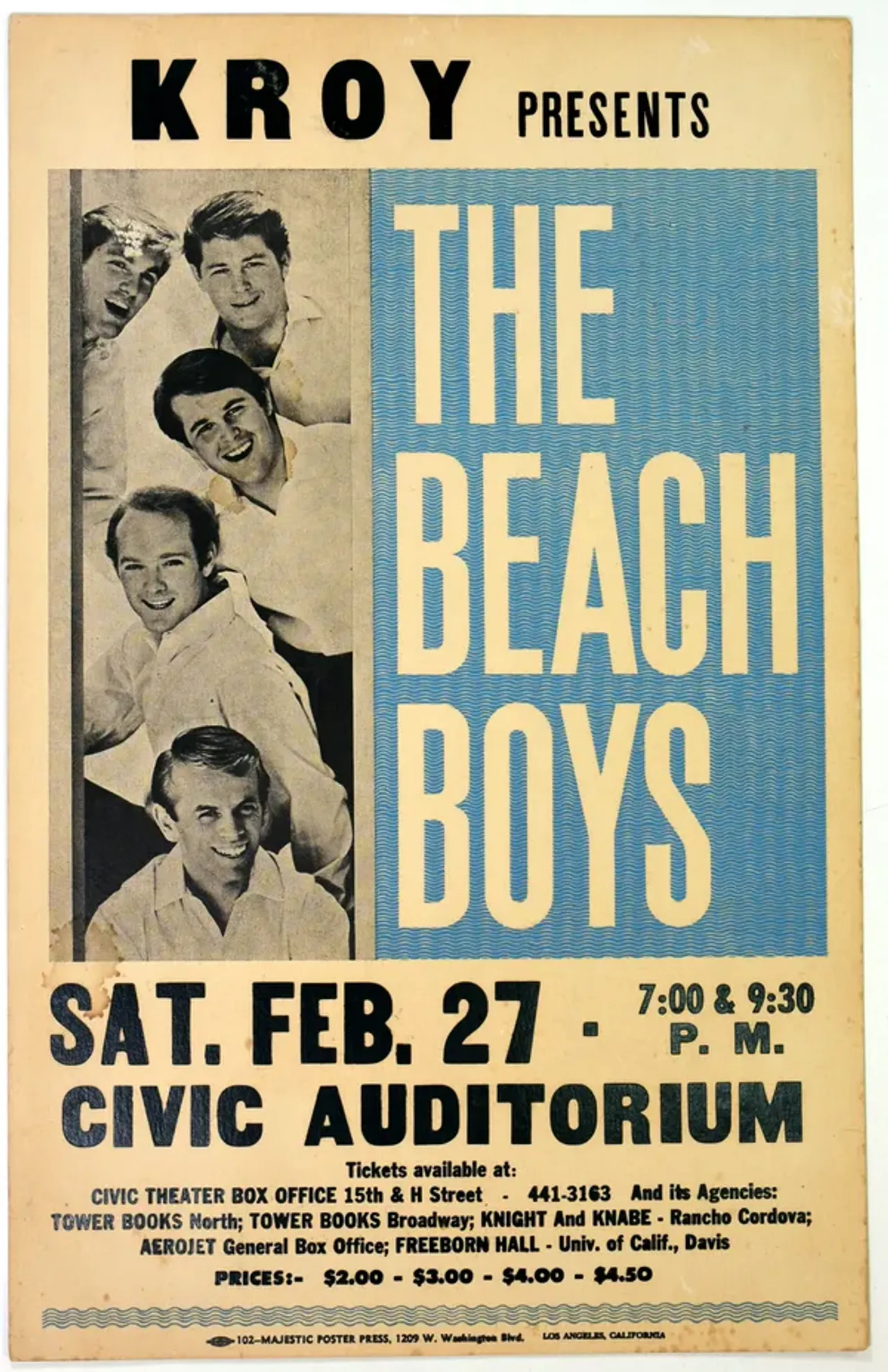 Beach Boys Civic Auditorium 1966
Beach Boys Civic Auditorium 1966
This appearance from 1966 has, on one hand plenty of sales to dive into, but on the other, there's no Beach, and the Boys are looking a little more like men just a few years into their global successes. An uncertified 4.5 sold for $350.00 a month ago.
All-American Youth of Riverdale
Parallel to the Beach Boys’ musical wave, comic books played a crucial role in the surf culture’s ascension. Archie Comics seized the surf craze and brought it into the homes of millions of readers. Andrews and his friends, all while engaging in their usual high school antics, were regularly depicted catching waves and enjoying beach parties.
These stories did more than briefly entertain; they unwittingly introduced surfing to a wider audience through relatable characters and goofy narratives. The whimsical, often exaggerated portrayal of surfing in these comics helped demystify the sport and integrate it into everyday American life.
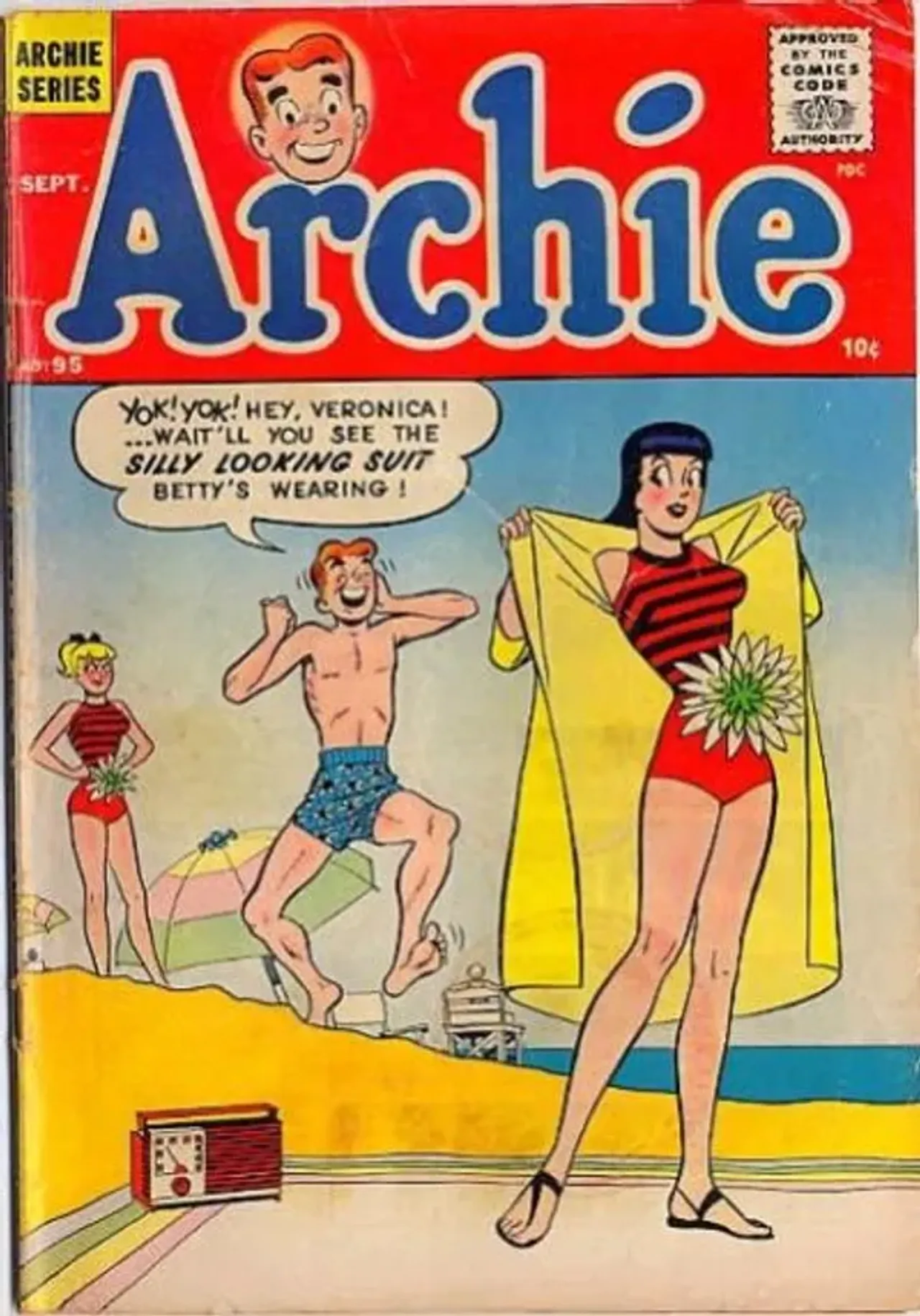 Archie Comics #95 - September 1958
Archie Comics #95 - September 1958
By all accounts this is the very first Archie cover that takes place on a beach. It's also the first time Archie doesn't have a shirt on, which is more significant considering he was almost always wearing his classic blue and white Riverdale High R sweater up until this point. This is a bold leap forward in the series, amplified by the swimsuits on the girls, and the 60's are right around the corner. The highest recorded grade for this book is an 8.5. GoCollect lists the FMV at $800.00.
 Archie Comics #139 - August 1963
Archie Comics #139 - August 1963
Archie Andrews returns to the beach for the 2nd time in the summer of 1963, and the gang doesn't leave it very often after this cover is released. The subject matter is more provocative. The swimsuits are 2-piece. The 60's are in swing. Right now the cost of picking up this issue is extremely affordable considering these minor significances.
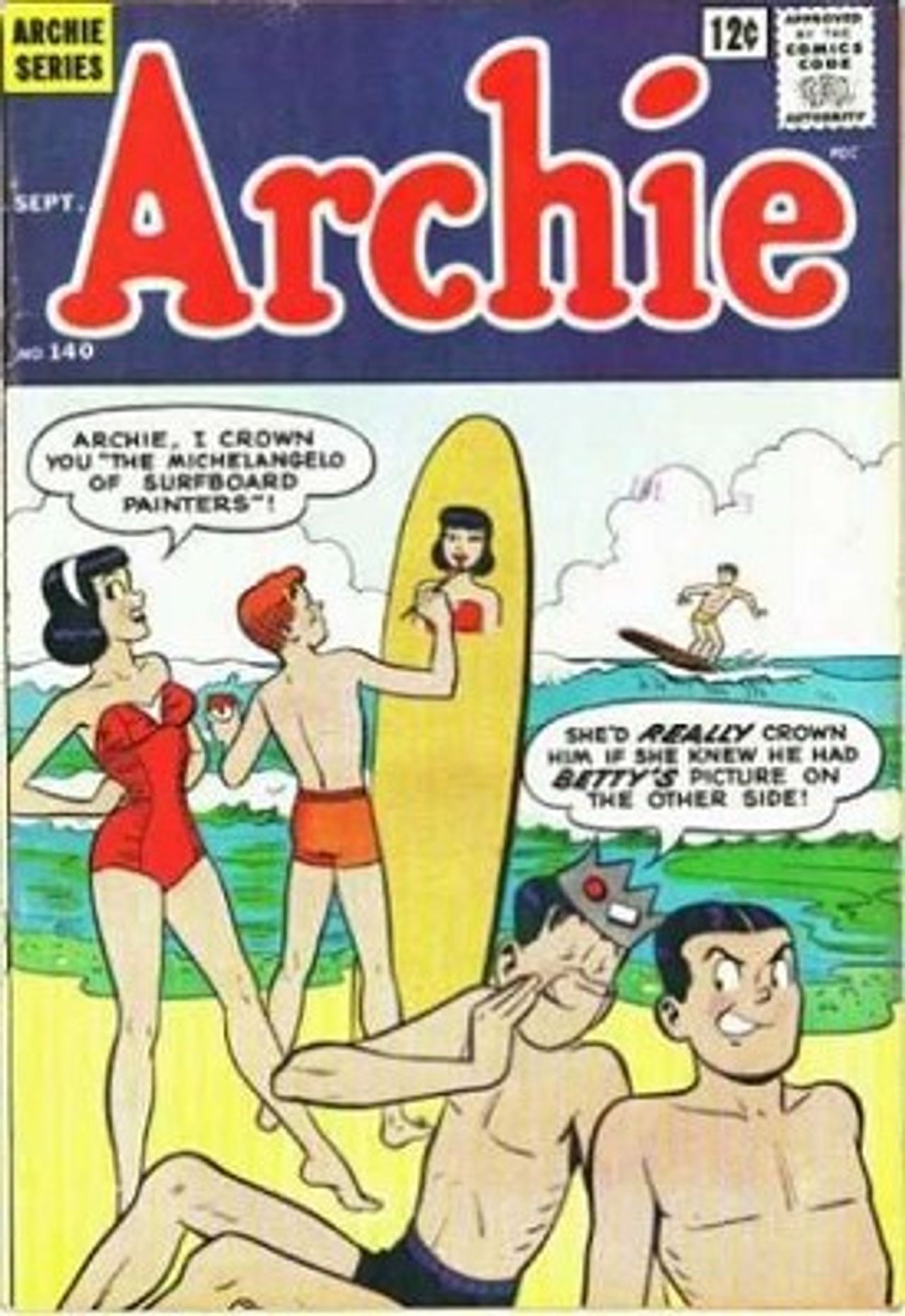 Archie #140 - September 1963
Archie #140 - September 1963
There are only 2 graded copies of this surf cover on the CGC census so there is very little data to extrapolate upon. Finding higher grade copies of any Archie comic from this era isn't easy, but this cover has everything going for it, including the classic love-triangle jab.
Making Waves
The influence of comic books wasn't confined to the Archie universe. Comic books have long been a place where quintessential archetypes of the west first met their mainstream successes. Golden Age comics first introduced audiences to the language, fashion, and spirit of surfing a couple decades earlier, contributing to its growing allure. They made surfing seem like an accessible, exciting adventure rather than an exclusive, elite activity. As the years rolled on. depictions of surfing on covers only got wackier and more ludicrous.
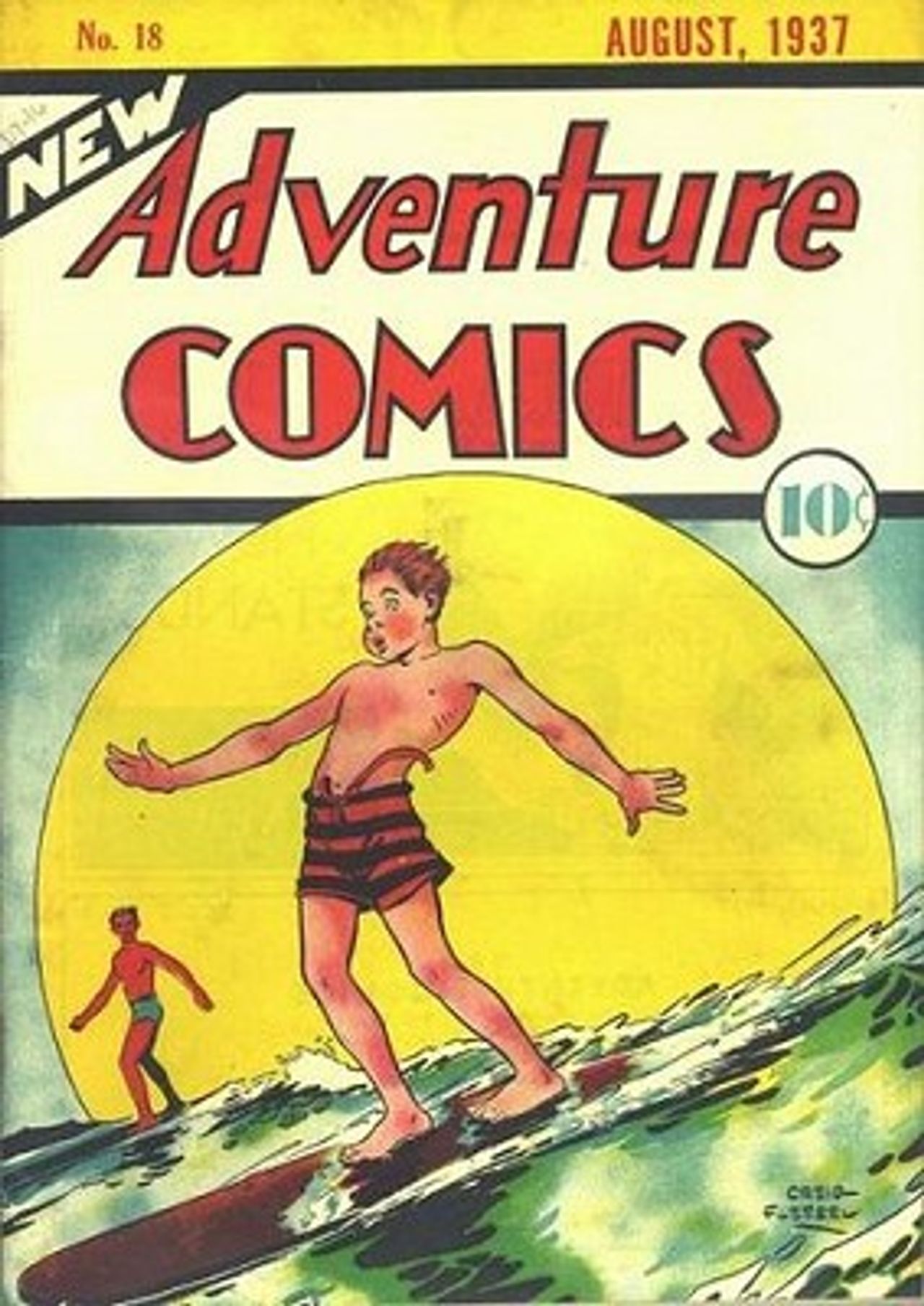 New Adventure Comics #18 - July 1937
New Adventure Comics #18 - July 1937
Craig Flessel did the cover of this super-early depiction of surfing in comics. And in my opinion he captured the act better than any artist has done since. It all makes sense. The stance makes sense, the arms and fingers make me feel off-balance, the hips do the same, and the expression is exhilarating; but above all, the position on the face of the wave is perfect (surfing covers are notorious for placing the surfer on the wrong part of the wave). It's as if the young man on this cover has just successfully stood up for one of the first times on a green wave. He's in great position, he's got plenty of sun, and the best part is - his buddy totally saw the whole thing.
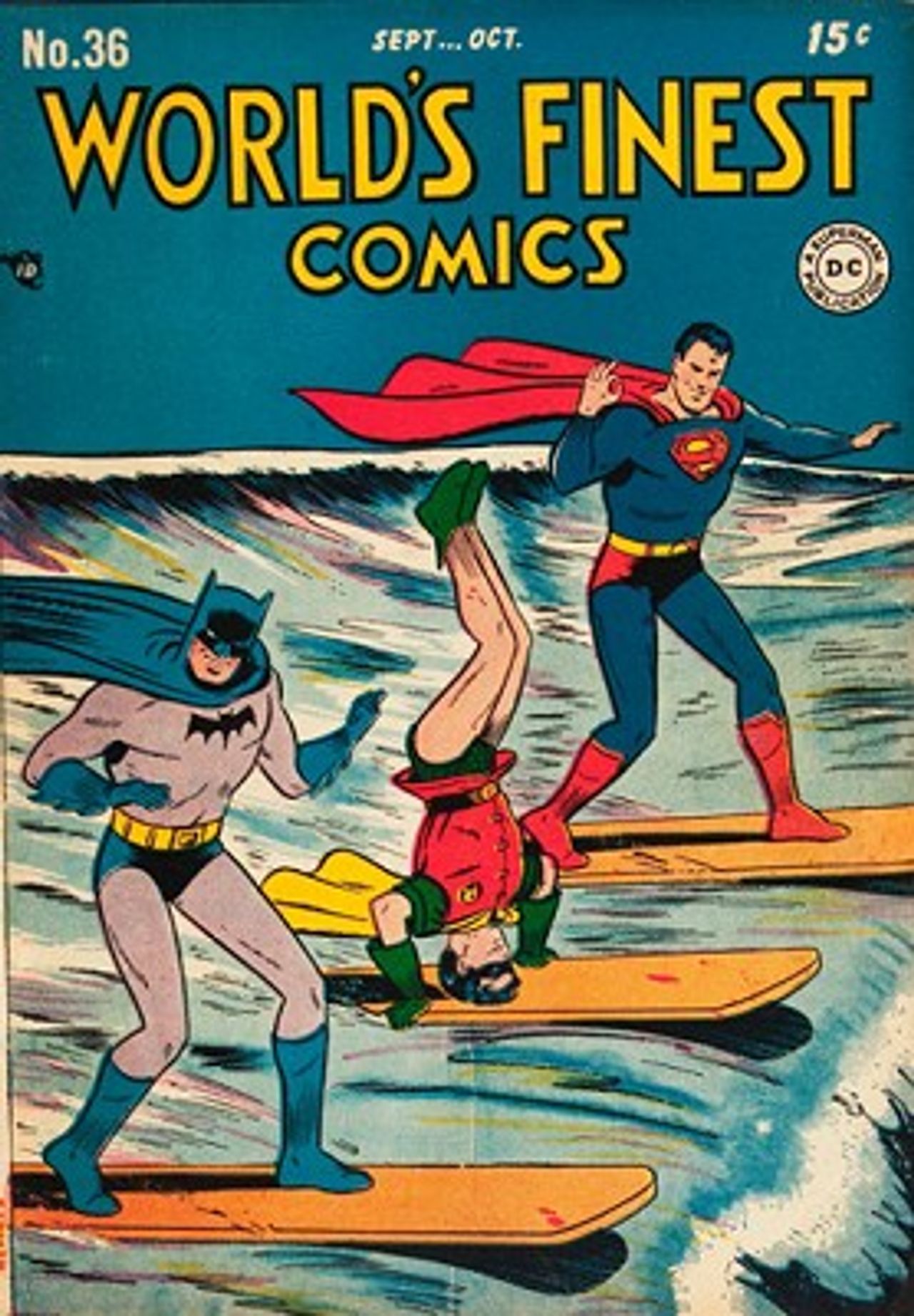 World's Finest Comics #36 - August 1948
World's Finest Comics #36 - August 1948
I have absolutely no real qualms with this classic cover. These pals are having a dandy of a time, and the Boy Wonder isn't hesitating to let us know. I do sometimes wish the older two would exert more guidance and stop this horseplay before Robin eats that second wave. All three are in a tough spot geographically (even for superheroes), and this may have been the peak moment of fun on this day.
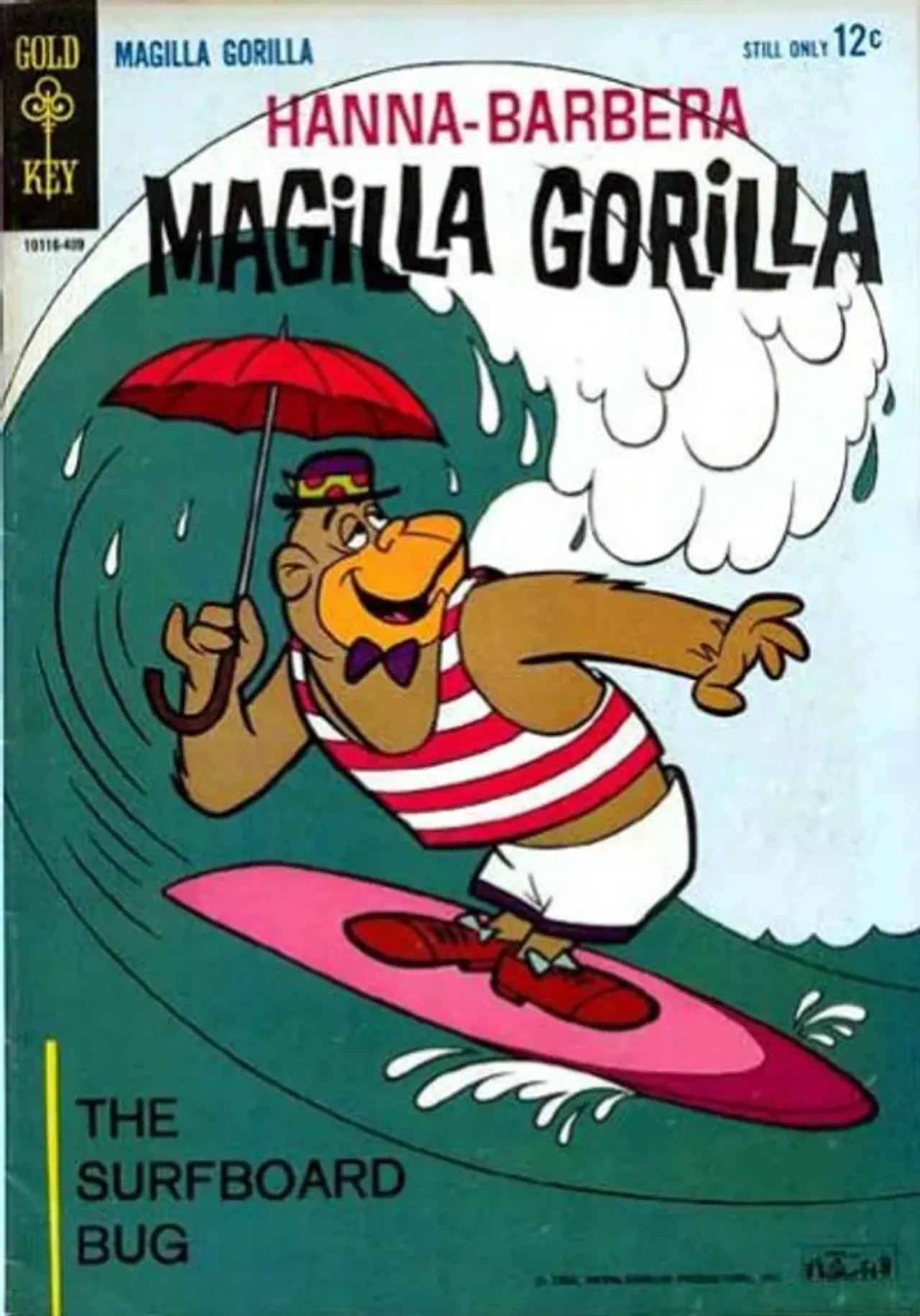 Magilla Gorilla #2 - September 1964
Magilla Gorilla #2 - September 1964
I am fairly convinced that this Gorilla is under the influence of something other than sun and fun. Coupled with his obvious eye for fashion and a flare for the dramatic - this kind of behavior often wins you friends at the beach. But all that glory won't save him from the World of Magilla he'll be in if he doesn't focus before his wave closes out on him
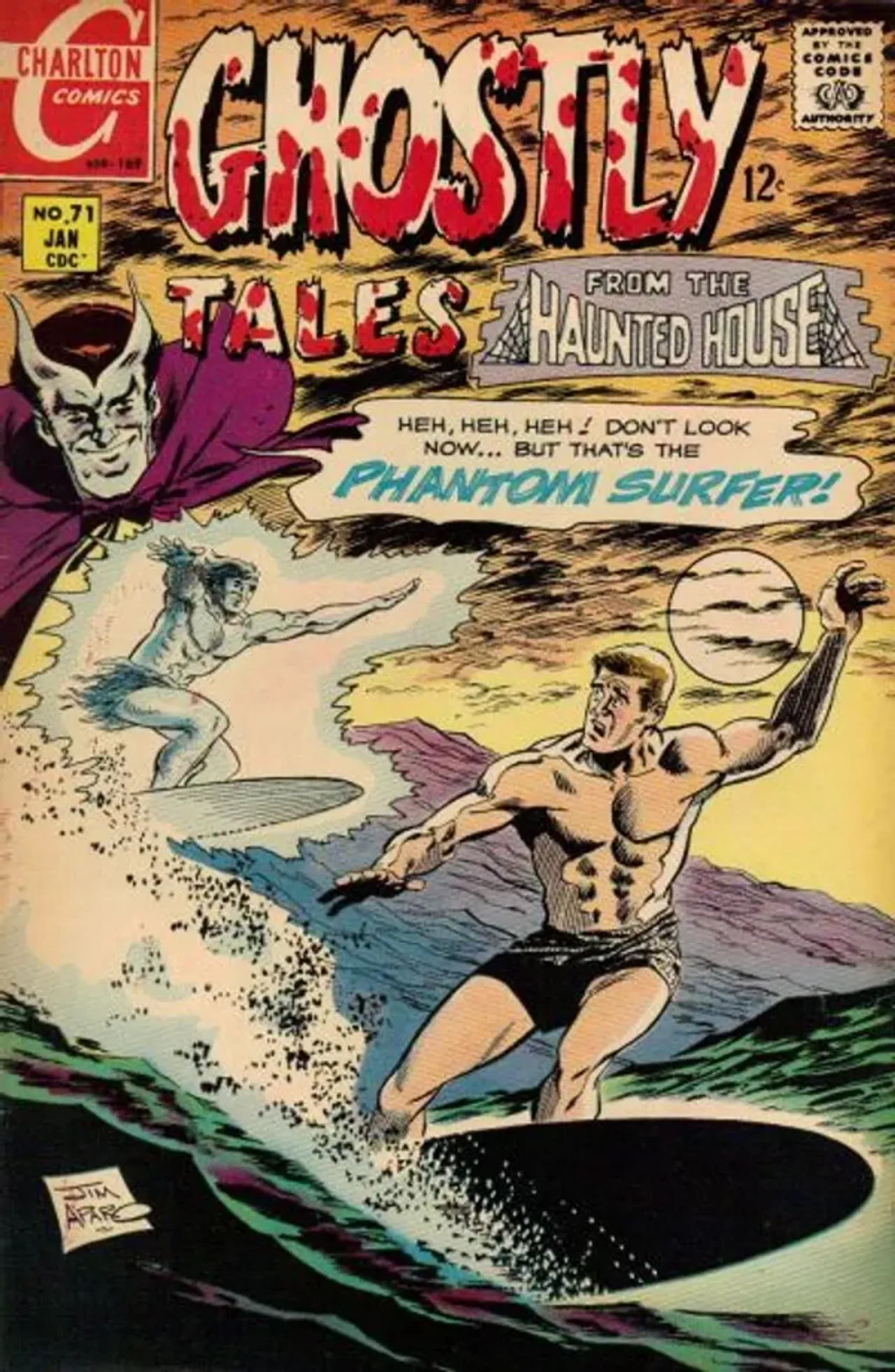 Ghostly Tales #71 - January 1969
Ghostly Tales #71 - January 1969
Jim Aparo brought to life this wickedly engaging rendition of what surfing would be like if it didn't require waveforce. I would jump on the first chance I had to go cross-country surfing, with or without phantoms.
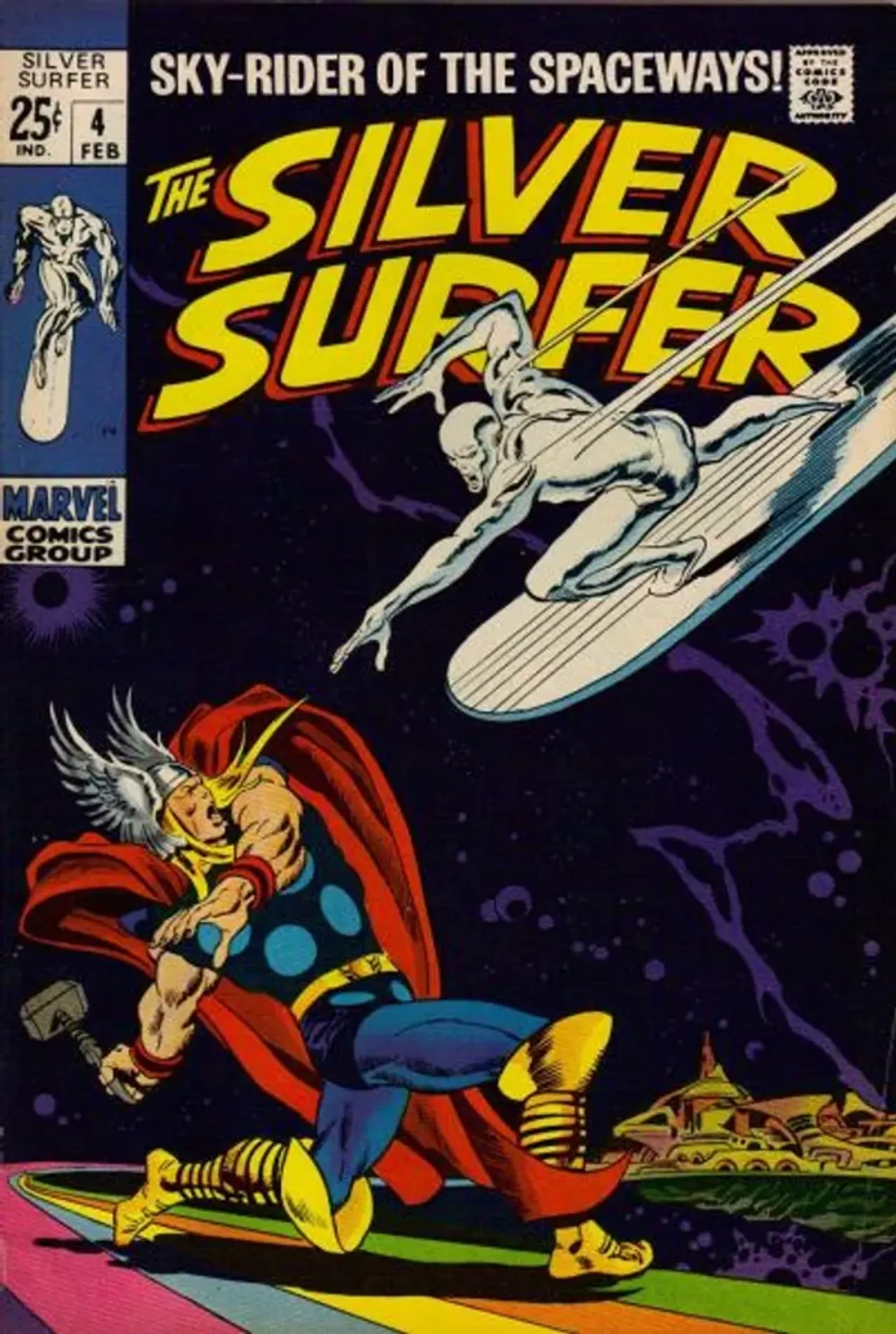 The Silver Surfer #4 - January 1969
The Silver Surfer #4 - January 1969
There is no way I can write a post about surfing in comics and not include the Sky-Rider of the Spaceways! This is one of my favorite all-time covers and characters, and if you ever manage to get beyond the sleek and stylish performance of this Buscema masterpiece, the interior holds a brilliance in script and artwork that is mimicked throughout the entire Silver Age run of the Silver Surfer.
Today, as I ride the waves and feel the ocean’s embrace, it’s clear that surfing’s integration into American pop culture was not a random phenomenon. It was a confluence of music, media, and marketing that brought the sport into the limelight. The Beach Boys’ iconic sound, the vibrant stories in Archie Comics and beyond, and the overall nonchalance of the surf motif all played their part in making surfing a symbol of youthful exuberance and freedom.
